The research reported here was funded in part by the Minerva Research Initiative (OUSD(R&E)) and the Army Research Office/Army Research Laboratory via grant #W911-NF-17-1-0569 to George Mason University. Any errors and opinions are not those of the Department of Defense and are attributable solely to the authors.
U.S. military withdrawal from Afghanistan is about to usher in a new political and social dispensation in the country. Earlier in this three-part blog series, I detailed four possible scenarios for Afghanistan’s future and analyzed internal factors shaping their likelihoods. In this final piece, I analyze where external actors have leverage.
There is no solution from the outside to Afghanistan’s violence and the ascendance of the Taliban. International engagement is likely to influence developments in Afghanistan at the margins. Various countries have some capacity to shape the Afghan government, the Taliban, and the country’s powerbrokers. However, their actions are more likely to intensify violence, rather than temper it, even though all regional actors are against civil war, an Islamic emirate, or a government exclusively run by the Taliban.
The Afghan government
The United States has the greatest leverage with Afghan government due to its funding of the Afghan National Defense and Security Forces (ANDSF). Reduction of this funding would result in a rapid collapse of the ANDSF and a swift expansion of Taliban power. Washington also helps fund the civilian administration in Afghanistan on which any future government will depend.
However, this leverage has not enabled the U.S. to orchestrate an interim unity government despite spring 2021 efforts by the Biden administration to do so to facilitate Kabul-Taliban negotiations. The Taliban is not interested in early elections — the maximum President Ashraf Ghani has been willing to contemplate. Instead, it seeks to bypass and render irrelevant the Afghan government and negotiate a new division of power with Afghan powerbrokers.
Nor has the Afghan government shown serious interest in negotiating with the Taliban over the past 15 months. Any deal the Taliban would have been willing to accept would have required major concessions from Kabul. Instead, the Afghan government attempted to entangle the U.S. in fighting in Afghanistan until an arrangement that preserved its power and the existing political dispensation could be reached — i.e., until the Taliban was defeated, however many years required.
Nor has U.S. leverage during the past two decades translated into shaping governance in Afghanistan toward greater inclusivity and accountability and less corruption and predatory governance.
The United States and other international actors can attempt to shape the Afghan government’s attitude toward negotiations through offering or denying visas and asylum to key government members and possibly threatening to seize abroad their illicitly obtained financial assets. Of course, the latter requires having portfolios of indictable issues against members of the government.
Afghan powerbrokers and militias
Those same tools — visa and asylum provision or denial, threats to seize illicit funds abroad, and judicial indictments that deny them access to their assets abroad and the international financial system — also apply to Afghan powerbrokers as they decide whether to defect from the government, stick with it, or raise militias to fight the Taliban.
Currently, the United States and its partners should push to keep the Afghan political scene as united around the government as possible and create disincentives for separate accommodation deals with the Taliban. International actors should provide support for and facilitate negotiations between Afghan powerbrokers and the Afghan government, such as the recent efforts for a national unity council. The more Afghan political actors provide a unified front vis-à-vis the Taliban, the smaller the political concessions to the Taliban they will need to make. However, even now, with the country on the precipice, the national unity council talks — like many prior iterations — remain mired in narrow political calculations. And as the Taliban gains significant military momentum, international leverage vis-à-vis Afghan powerbrokers will weaken.
International actors can also support Afghan powerbrokers or independent militias. Russia and Iran have taken this path, with Russia having supported the build-up of militias in the north for some years and Iran having sponsored and coached Afghan Shia fighters known as fatemiyoun. With various levels of training and organization from Iran’s Islamic Revolutionary Guard Corps, some fatemiyoun who fought in Syria have returned to Afghanistan. More could return and start fighting the Taliban.
At the same time, both Russia and Iran have struck separate arrangements with the Taliban, providing it with weapons and intelligence. Iran also hosts Taliban leaders and their families.
The United States has built up counterterrorism militias in Afghanistan, many of which have engaged in egregious human rights violations and pushed local populations into the hands of the Taliban. In the context of a prolonged civil war, or if the Taliban violates its counterterrorism commitments to Washington by allowing terrorist attacks against U.S. assets or allies, the U.S. could direct these militias to fight the Taliban.
China has not cultivated militia proxies in Afghanistan, even though it has assiduously sought to cultivate local Afghan government officials along Afghanistan’s border with China and Pakistan. Instead, it too has made its peace with the Taliban, relying on Taliban assurances to preserve Chinese economic interests and restrain Uyghur fighters in Afghanistan from aiding repressed Muslim brethren in Xinjiang. Beijing could also attempt to resurrect a military base in Badakhshan province — not to fight the Taliban but to prevent leakage of militancy into China.
The Taliban
The most strategic international intervention would be to shape the Taliban’s rule. Beyond counterterrorism, the first element would be to induce the Taliban to avoid excluding ethnic minorities from the new regime. The international community should also seek to reduce the extent of losses to human rights, particularly women’s rights.
The shaping tools include the denial or issuance of visas, removal from or imposition of international financial and other sanctions, the release of captured Taliban fighters, and the delivery or denial of international aid to a future government including the Taliban.
Aid is a particularly useful tool as the Taliban does not want to economically ruin Afghanistan like it did in the 1990s, when it purposefully destroyed the remnants of the war-ravaged economy and administration to “purify” Afghanistan.
Another crucial shaping tool is educating the Taliban about the requirements and modalities of modern governance, including donor aid requirements regarding social inclusion, women’s rights, and financial accountability. Flying Taliban leaders on a world tour to expose the group to what kind of country it could have with the preservation of donor assistance and communicating clearly what redlines cannot be crossed — such as completely denying women access to education, health, and jobs as in the 1990s, or brutalizing the Shia — could have pronounced effects.
While the international community can demand the Taliban reduces violence, such an objective is most unlikely for at least a year. Pakistan, too, won’t be able to sway the Taliban, even if it seeks to do so. The Taliban understands well that its military ascendance increases its internal negotiating leverage. Even Pakistan’s fear that the U.S. military disengagement from Afghanistan may lead the United States to stop focusing on Pakistan, while cultivating India as a partner against China, does not give Islamabad a magic wand to halt the Taliban’s military push.
Paradoxically, of course, the arrival of the Taliban into formal government in Afghanistan can reduce Pakistan’s leverage over the group, especially if influential international actors maintain working relations with the Taliban. Even before a rise to formal power, if the Taliban is able to move its political leaders and their families from Pakistan into Afghanistan, Pakistan’s leverage will decline. The balance of power between Pakistan and the Taliban will also be influenced by internal rebalancing of power within the Taliban among the Quetta and Peshawar Shuras, the Haqqanis, military chief Mullah Mohammad Yaqoob, older leaders such as Mullah Abdul Ghani Baradar, and the Taliban’s field commanders.
Civil Society
In addition to shaping the Taliban and Afghan powerbrokers and government, the international community should maintain financial support for Afghan civil society (as well as providing asylum visas to those under threat). It should insist that civil society actors be included in negotiations about new arrangements in the country. Seeking to expand any Taliban-powerbrokers deal to include some voices from civil society and women is important.
Realistic Outcomes
While international actors have leverage, none of their tools can preserve the current Afghan constitutional order and rights regime. While the incentives of money, international recognition, sanctions, and occasional military strikes can make the Taliban more compliant with its counterterrorism obligations and less autocratic and exclusionary in its governance, they will not transform the Taliban into women’s-rights-supporting democracy promoters.
The rule that a Taliban-led government will promote will still be an authoritarian rule — perhaps an Iran-like arrangement of a supreme religious council with deeply imperfect, but competitive elections of an executive branch underneath and technocratic administration.
If key members of the international community, including the U.S. Congress or members of the European Union, cannot stomach providing financial assistance to a Taliban-led future Afghan government, they may unravel any emergent authoritarian stability.
Twenty years after intervening to remove the Taliban from power, limiting the extent of losses to rights currently granted Afghans — while being careful not to exacerbate and prolong the country’s civil war — is the best that we can do.
The Brookings Institution is committed to quality, independence, and impact.
We are supported by a diverse array of funders. In line with our values and policies, each Brookings publication represents the sole views of its author(s).
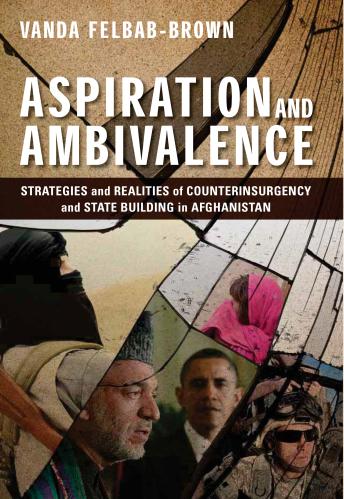

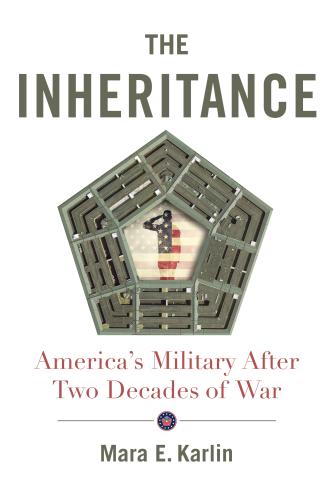
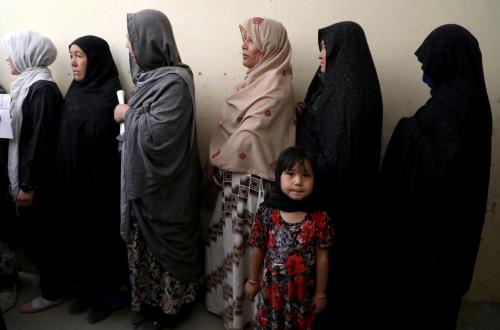

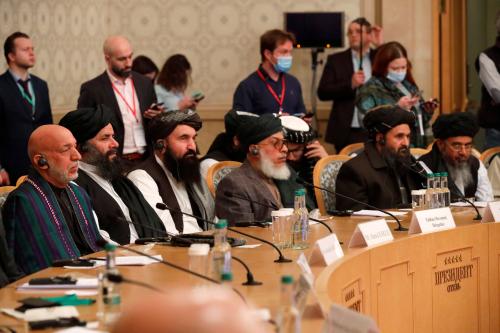

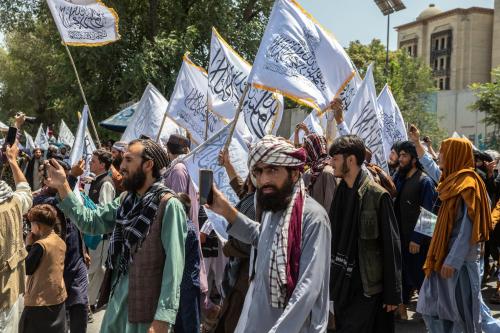
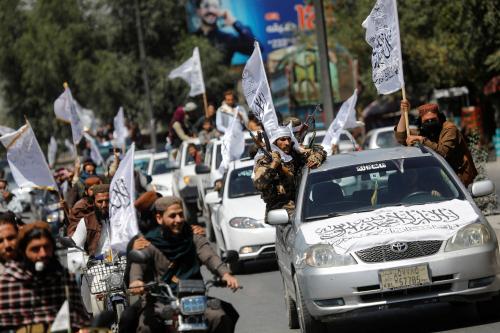
Commentary
Afghanistan after American withdrawal: Part 3 — Where external actors have leverage
June 16, 2021